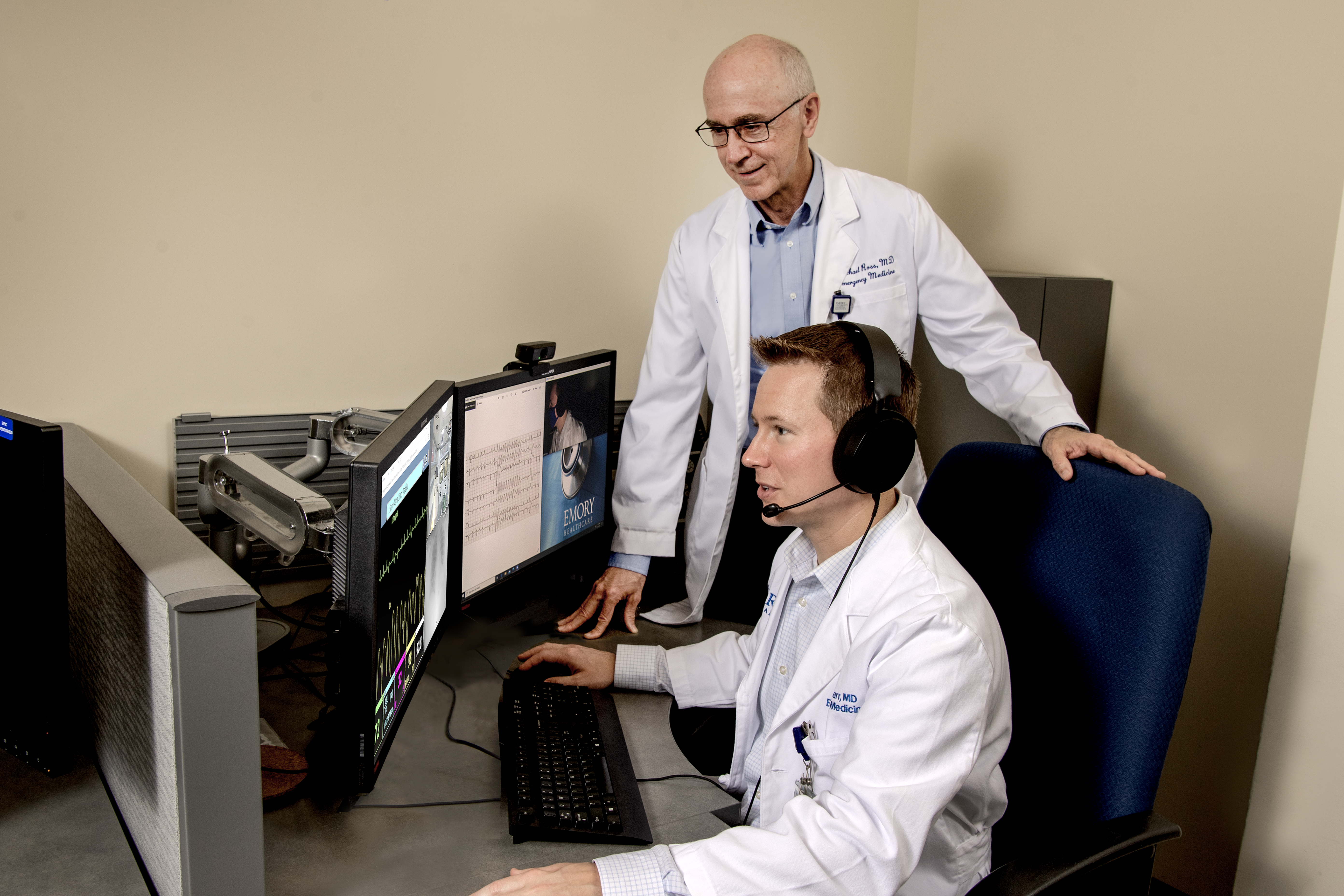What is the Prehospital and Ambulatory Virtual Emergency Services (PAVES)?
The ultimate goals of the Prehospital and Ambulatory Virtual Emergency Services (PAVES) program are to address disparities in access to medical care, support rural EMS personnel, and provide rural patients with high‑quality care through access to advanced technical expertise and a broad network of subject matter experts across multiple specialties.
Leveraging its statewide reach, PAVES is designed to rapidly scale during public health emergencies and disasters, providing virtual physician support to EMS and healthcare partners. Through a partnership with the Southern Regional Disaster Response System (SRDRS), PAVES serves as a critical telehealth resource to strengthen disaster preparedness, response, and recovery across the southeastern United States.
In 2021, the Health Resources and Services Administration (HRSA) awarded the Emory Rural Tele-EMS Network (ER-TEMS) a $1.2 million grant over four years. The program is now called PAVES: Prehospital and Ambulatory Virtual Emergency Services. Georgians in rural counties who need emergency medical care have access to Emory Emergency Medicine doctors and specialists even before they reach a local hospital. The program kicked-off in Randolph County in April 2021.
Early comprehensive telemedicine assessments using video technology and high-speed internet reduce unnecessary transports and optimize the utilization of hospital resources to deliver the right care at the right time and the right place. Patients are safely transported to local facilities for definitive care after initial stabilization and treatment, in collaboration with guidance from Emory's on-call emergency provider.
Network Leadership
The Prehospital and Ambulatory Virtual Emergency Services (PAVES) was previously known as the Emory Rural Tele-EMS Network and was supported by the Health Resources and Services Administration (HRSA) of the U.S. Department of Health and Human Services (HHS). It was part of a financial assistance award totaling $1.2 million with 100 percentage funded by HRSA/HHS and zero percentage funded by non government source(s). The contents are those of Emory University and do not necessarily represent the official views of, nor an endorsement, by HRSA/HHS, or the U.S. Government.








